Alice Betrothed
Hampton Court Palace
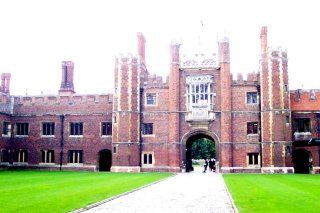 The front entrance to Hampton Court Palace.
The front entrance to Hampton Court Palace.
Hampton Court Palace was begun in 1514 by Thomas Wolsey, Cardinal and Lord Chancellor of England under Henry VIII. The best surviving part of Wolsey’s palace is Base Court with its forty guest lodgings. By 1528, Wolsey had fallen from favor and was forced to relinquish Hampton Court to the king, who remodeled the palace to suit himself. King Henry’s personal lodgings have since been demolished, but you can still see his kitchens, his great hall, and his astronomical clock in Clock Court. The current Privy Garden is a restoration of William III’s 18th century garden, but still well worth a visit!
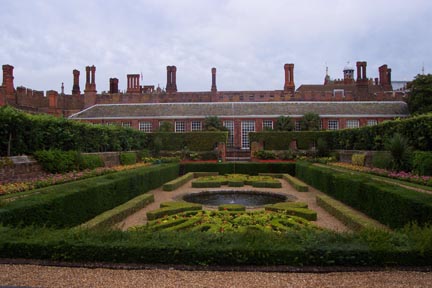 Part of the Privy Garden, which would have looked different in 1549.
Part of the Privy Garden, which would have looked different in 1549.
Hampton Court Palace is open to the public seven days a week year-round. Just outside London, it's a perfect day trip back in time for anyone visiting the capital.
Royal Palace of Hatfield
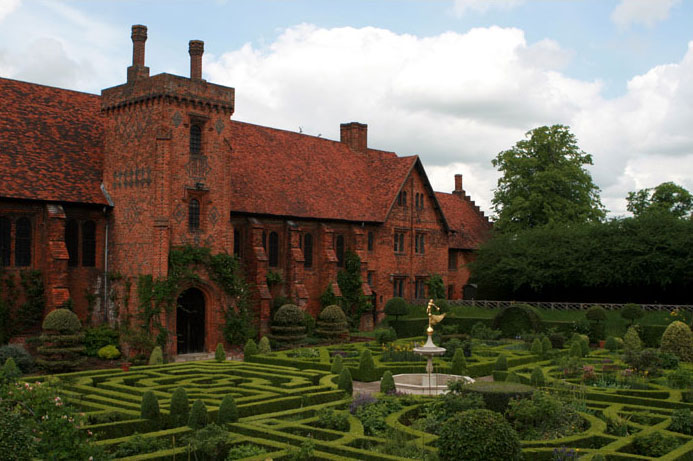 The knot garden and surviving wing of the Old Palace.
The knot garden and surviving wing of the Old Palace.
Hertfordshire’s Royal Palace of Hatfield was built around 1485 by the Bishop of Ely. Seized by Henry VIII in 1538, it became a perennial residence of the royal children and particularly the Lady Elizabeth. Two portraits of her can be viewed there today, along with some of her clothing and letters. A newer house now stands on the site (and was featured in another Chase family romance, Kendra and Trick’s story!), but one wing of the original palace is still extant and was later used as a stables. The surviving wing boasts some gorgeous medieval brickwork and rests adjacent to a beautiful knot garden, which still contains a hedge maze like the one Adam and Alice frequented!
Elizabeth's successor, James I, did not care for Hatfield as a home, preferring Theobalds, the residence of Robert Cecil, first Earl of Salisbury. He proposed an exchange, and the Cecils agreed. In 1608, the earl tore down most of the palace and began building the present house in what was then a modern style, at a cost of over £38,000, a staggering amount of money in those times. Though first designed by Robert Lyminge, the plans were modified by others, including, it is thought, young Inigo Jones.
From the seventeenth century until present day, Hatfield House has served as both a social and political center, hosting luminaries from royalty on down. Well worth a visit, the magnificent house is open for tours from March through October, and most of the gardens are open year-round.
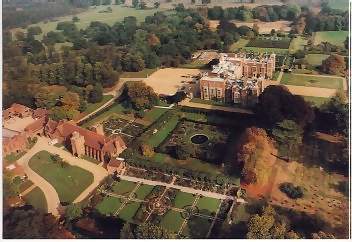 Hatfield House and gardens—aerial view.
Hatfield House and gardens—aerial view.
The Tower of London
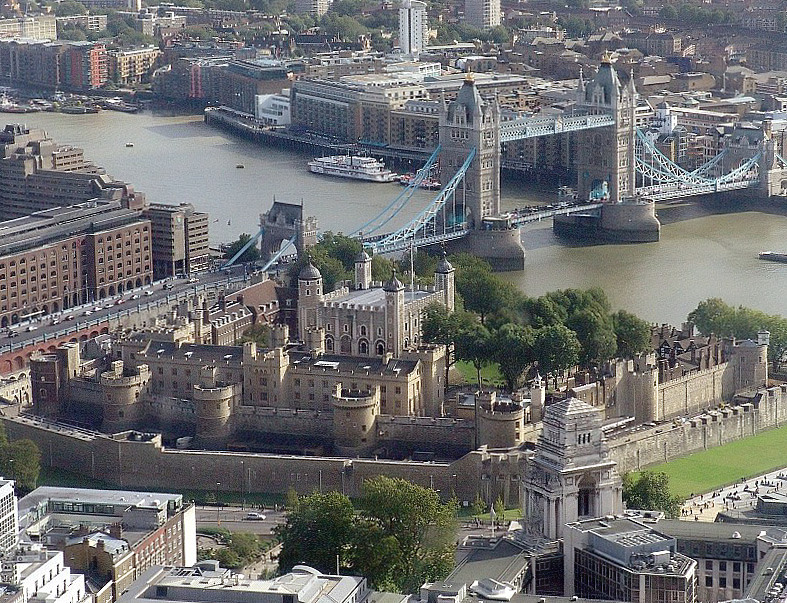 Aerial of the Tower of London compound and iconic Tower Bridge over the Thames.
Aerial of the Tower of London compound and iconic Tower Bridge over the Thames.
The Tower of London was founded in 1066 by William the Conqueror. In its early history the Tower was a luxurious royal palace, but by the Tudors’ time it fell out of favor as a residence and was used more as an administrative center, armory, treasury, and (most notoriously) a prison. Especially during the 16th and 17th centuries, the Tower held many political and religious prisoners and gained a fearsome reputation as a place of torture and execution. In truth, the use of torture was rare and high-born prisoners were generally housed in comfort, as the palace had no purpose-built prison cells.
Today the Tower of London is one of Britain’s most popular tourist sites. Located in Central London, it’s open to the public seven days a week year-round. The rooms Alice occupied during her imprisonment are modeled after those that housed Sir Walter Raleigh a couple of decades later, which are currently open to the public, so be sure to check them out! Though the Royal Menagerie no longer exists, you can also still view the Crown Jewels during your visit.
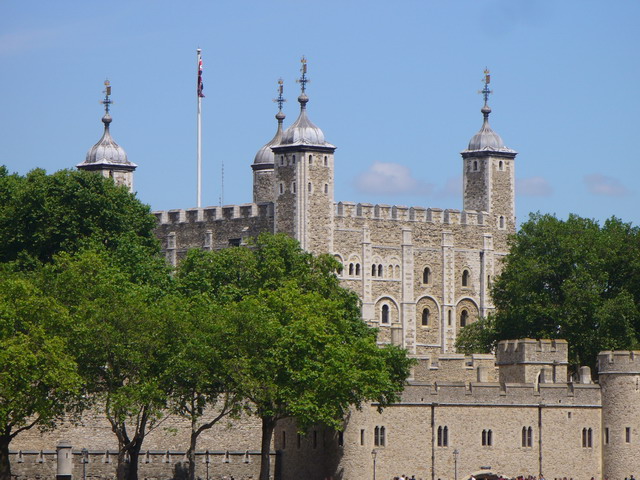 The White Tower, the oldest part of the palace which was built by William the Conqueror.
The White Tower, the oldest part of the palace which was built by William the Conqueror.
Tudor House and Garden, Southampton
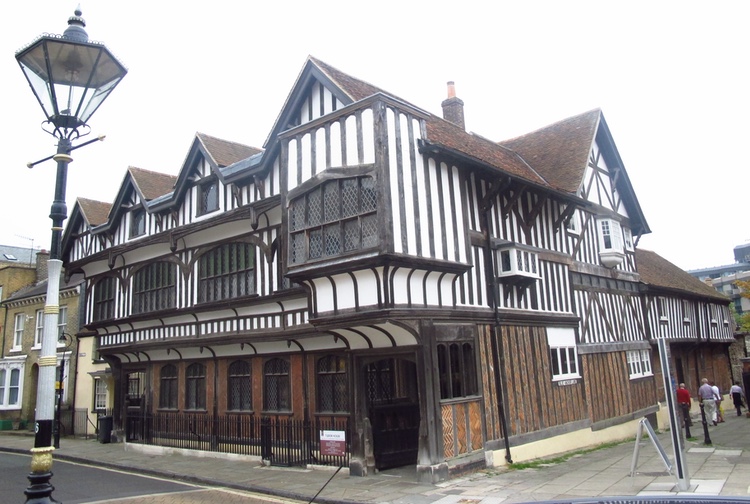 Picture attributed to: Lupusaesticus, https://commons.wikimedia.org/wiki/File:Tudor_House_Southampton.JPG
Picture attributed to: Lupusaesticus, https://commons.wikimedia.org/wiki/File:Tudor_House_Southampton.JPG
The Chases’ London town house is loosely modeled on a house located in another English town, the Tudor House and Garden in Southampton. While the earliest part of the building was a Norman house built in the 1180s, the structure was expanded and changed many times over the centuries until it became a museum in 1912, then was closed around the turn of the millennium for extensive restoration. Reopened in 2011, the house now contains a variety of architectural exhibits including the Tudor Banqueting Hall (where Adam had dinner with the Goldsmith family); Tudor and Victorian kitchens; a Georgian wing; a WWII-era air raid shelter; and a Tudor knot garden designed by a garden historian. The museum is open Saturdays-Thursdays year-round.
Arundel Castle
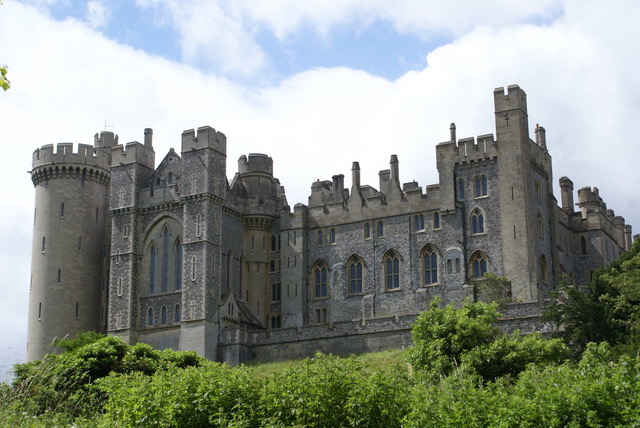
Blackgrave Castle is loosely modeled on Arundel Castle in West Sussex. It has been home to the Dukes of Norfolk and their family, the Fitzalan Howards, since 1243, save for a short period during the Civil War. Although the family still resides there, portions of their magnificent home are open to visitors and more than worth a detour, should you ever find yourself in the area.
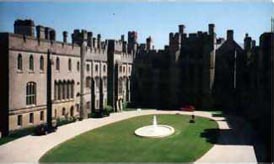 View of the quadrangle.
View of the quadrangle.









